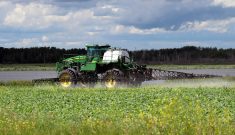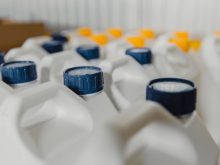Q: What factors do I need to consider when planning my 2022 crop rotation?
A: With 2021 safely in the rear-view mirror, it’s time to finalize plans for the 2022 crop year. When planning for the new season, there are many different agronomic factors that must be taken into consideration.
With crop prices sitting above average for most crops, producers may have more cropping options in 2022 than previous years. Feed barley, oats, peas, HRSW and canola all currently have the potential for above-average returns.
Read Also

Claas brings 1000 Series SP forage harvesters to Canada
In mid-August, Claas unveiled its new line of Jaguar forage harvesters at an event in Visalia, California, deep in the heart of that state’s dairy region.
To make the most of this potential, growers should consider the following factors when planning their 2022 crop rotation:
- Are there residual herbicide concerns? Some active ingredients within Group 2 and Group 4 herbicides require, on average, five to six inches of usable rainfall to open up the re-cropping labels. That is rainfall after herbicide application and before soil temperatures fall below 10 C. Before a crop plan is set, growers should double- and triple-check their fertilizer records to be certain they can plant their chosen crops with no risk.
- What is the soil nitrogen level for the upcoming year? Hopefully most producers completed soil testing last fall. It is important to know that residual nitrogen levels are below the threshold to grow a pulse crop. That threshold is +/- 50 pounds in a zero- to 24-inch depth. If a field is above this threshold, it would be best to rotate to a non-pulse crop. Knowing the residual nitrogen in the soil can also help growers keep their input costs down, especially considering the record-high fertilizer input prices. Knowing what is in the soil allows for the application of the correct nitrogen rates based on yield goals versus your long-term moisture amounts.
- Estimate in-season variable costs. Variable costs are things like seed, seed treatments, inoculants, insecticides, pre-seed burn, in-crop herbicides, fungicides, and pre- and post-harvest applications. Consult a crop inputs supplier on these variable cost options to get accurate guidance on pricing and availability, especially when growing a crop for the first time.
While there will always be unforeseen challenges, a well-prepared plan can help to mitigate these challenges throughout the year. As COVID-19 and extreme weather continue to take their toll, supply chain issues will continue to be a concern throughout the 2022 crop year.
More planning and more discussions with input suppliers will be the key to a successful 2022 crop year.
– Gary Topham, PAg, CCA, is the manager of agronomic solutions with Nutrien Ag Solutions in Manitoba.















